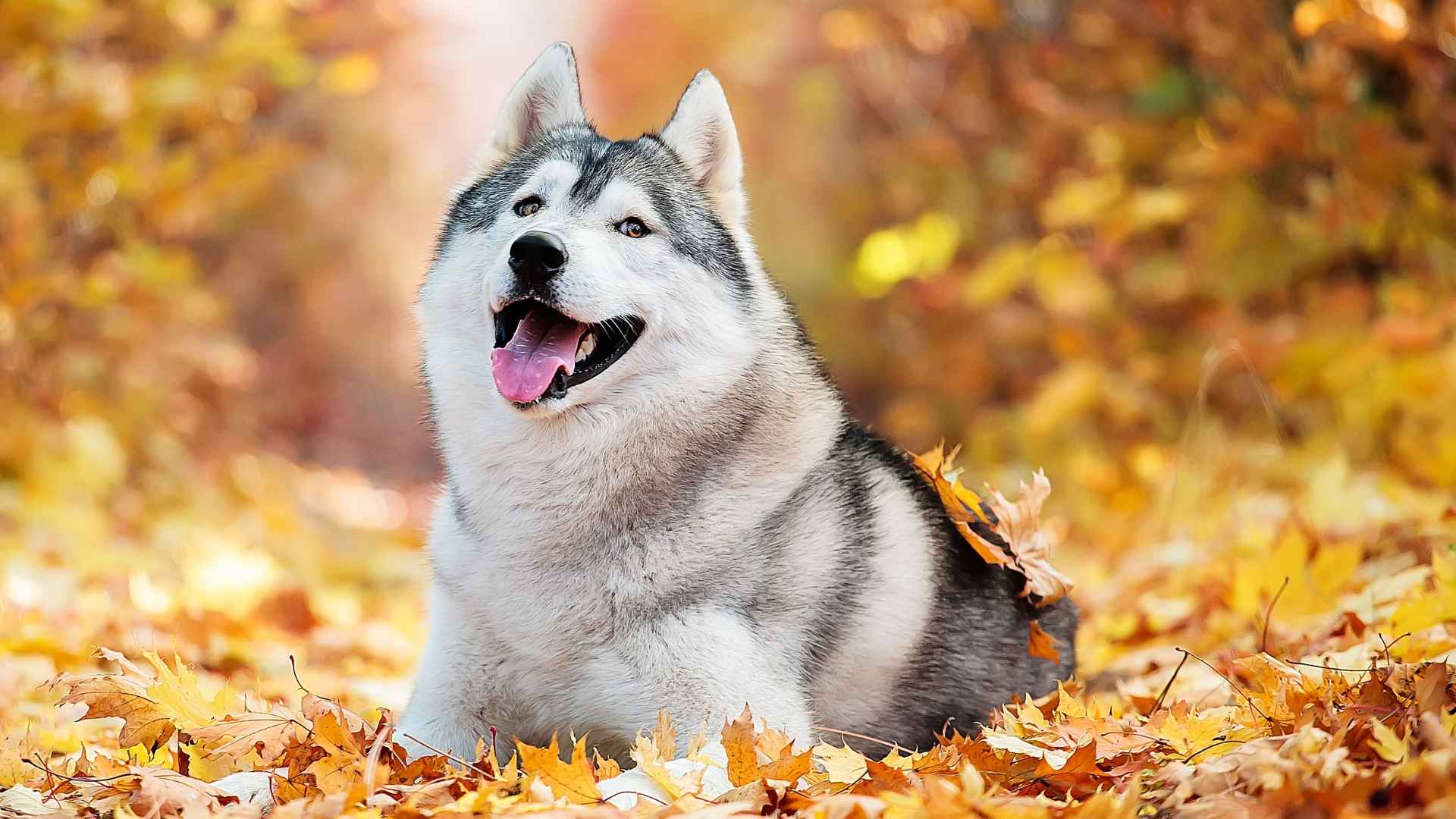Let’s face it—dogs are adorable in every color, but there’s just something about gray and white-coated dog breeds that makes you stop and say, “Wow, is that a real-life cloud with paws?” Whether it’s the silvery elegance of a Weimaraner or the fluffy two-toned charm of a Siberian Husky, these pups bring serious style to the dog park.
Gray isn’t your typical coat color—it’s rare, regal, and a total eye-catcher, especially when paired with crisp white markings. From pint-sized terriers to gentle giants like Great Danes, gray and white coats show up in all kinds of breeds, personalities, and floof levels.
Sure, choosing a dog is about more than just good looks (though these guys are basically canine supermodels), but if your heart’s set on a pup with this dreamy color combo, you’re in the right place. Let’s dive into the world of gray and white dogs—prepare for major cuteness!
Gray and white dog breeds
1. Chinese Crested
If you’ve ever seen a dog that looks like it styled its hair for a red carpet event but forgot the rest of its outfit, congrats, you’ve met a Chinese Crested. These little charmers from China are part of the toy group and come in two fabulous versions.
Chinese Crested dogs come in mostly hairless variety (with tufts of fluff on the head, feet, and tail like canine accessories) and the fully coated “powderpuff,” wrapped in silky softness from head to toe. With their one-of-a-kind look, it’s no surprise these pups are total head-turners.
Despite their dainty appearance, Chinese Cresteds are surprisingly agile. You might expect them to prefer lounging in a lap all day (and trust us, they do love that), but these little dynamos can rock an agility course with style. They’re fast, nimble, and eager to please, which makes them secretly sporty.
Chinese Cresteds are often described as “cat-like,” and not just because they like to perch on high places like couch backs and window sills. They’re curious, observant, and oddly graceful for creatures with such wild hairstyles. Whether they’re climbing furniture or snuggling on your lap, they’re all about staying close to their favorite human.
Don’t be fooled by their size—these dogs are clever, playful, and full of personality. They’re easy to train, love to learn tricks, and absolutely thrive on attention. While we can’t promise they’ll cure fevers or arthritis (yes, those were actual old-school myths), there’s no denying that they’re good for the soul.
Fun Fact:
These dogs were once the MVPs of ancient ships, keeping rats at bay during plague-ridden times. Thanks to their mostly hairless bodies, they were less likely to carry fleas—the tiny troublemakers that spread disease. So not only are they cute, but you could say they were early canine health heroes, too.
2. Irish Wolfhound
Meet the Irish Wolfhound—aka, the gentle giant of the dog world. Towering like a small horse (okay, maybe a pony), this shaggy sweetheart has roots that stretch all the way back to 391 AD. The Irish Wolfhound is the tallest of all American Kennel Club (AKC) breeds.
Once famous for hunting wolves in the Irish countryside, today’s Wolfhounds are more likely to chase squirrels than savage beasts. Their calm, affectionate nature makes them wonderful companions, as long as you’ve got the square footage to match their massive frames.
We’re talking big—like, “takes up your entire couch” big. Adult Irish Wolfhounds can weigh well over 100 pounds and stand tall enough to counter-surf without jumping. Despite their impressive size, they’re surprisingly mellow.
These dogs aren’t just calm—they practically define the word. They’ll happily snooze by your feet and soak up every ounce of affection you can spare. But don’t be fooled by their zen vibes—they still need daily walks and playtime to stay healthy.
While Irish Wolfhounds get along with other dogs and are generally patient with kids, they’re not exactly ideal for small apartments (unless you enjoy living like sardines). They thrive in spacious homes with room to stretch out—ideally, not right across your hallway. And yes, they do shed a bit, so grab a good brush and prepare for a grooming routine that keeps the fluff under control.
Socialization and training are a must, especially since your cuddly giant might have a leftover hunting instinct or two. Thanks to their history as sighthounds, they tend to chase anything small and speedy, so a tall fence and a good leash are non-negotiables. Start training early with gentle, positive reinforcement—they’re sensitive souls who want to please.
Fun Fact:
Irish Wolfhounds are generally a quiet breed. They aren’t the bark-first, ask-questions-later type, but they’ll definitely let you know if something’s amiss, then promptly nap to recover. They’re total family dogs, though, so don’t leave them solo for too long or they might develop separation anxiety.
3. Siberian Husky
Meet the Siberian Husky—an energetic sled dog with perky ears, a thick double coat, and a spirit built for cold weather. Originally bred by the Chukchi people, these loyal companions were known for endurance, pulling sleds across harsh Arctic terrain. They became legends during the 1925 “Great Race of Mercy,” where Husky teams delivered life-saving serum across frozen Alaska.
Huskies are among the most iconic gray dog breeds, with a dense coat that often features a blue or gray hue, though they also come in black, white, and tan. The all-white variety, with piercing blue eyes and a fairy-tale shimmer, stands out for its snowy elegance. Their expressive face masks and athletic build meet breed standard expectations for this striking and agile working dog.
With a sled racing pedigree, the Siberian Husky is all about action—think at least 1-2 hours of exercise daily. Whether it’s dog sledding, skijoring, or bikejoring, this breed loves pulling and running. Not so much into swimming or fetching, though.
As noted by Britannica, they’re escape artists, so make sure your yard is Fort Knox-level secure and keep them on a lead—otherwise, you might find your Husky off on an adventure, and good luck calling them back!
Though not ideal guard dogs, their friendly nature makes them a great family dog when properly trained and supervised. If you’re ready for a talkative, playful companion who was born to run, the Siberian Husky is an unforgettable choice for an adventurous family pet.
4. American Pit Bull Terrier
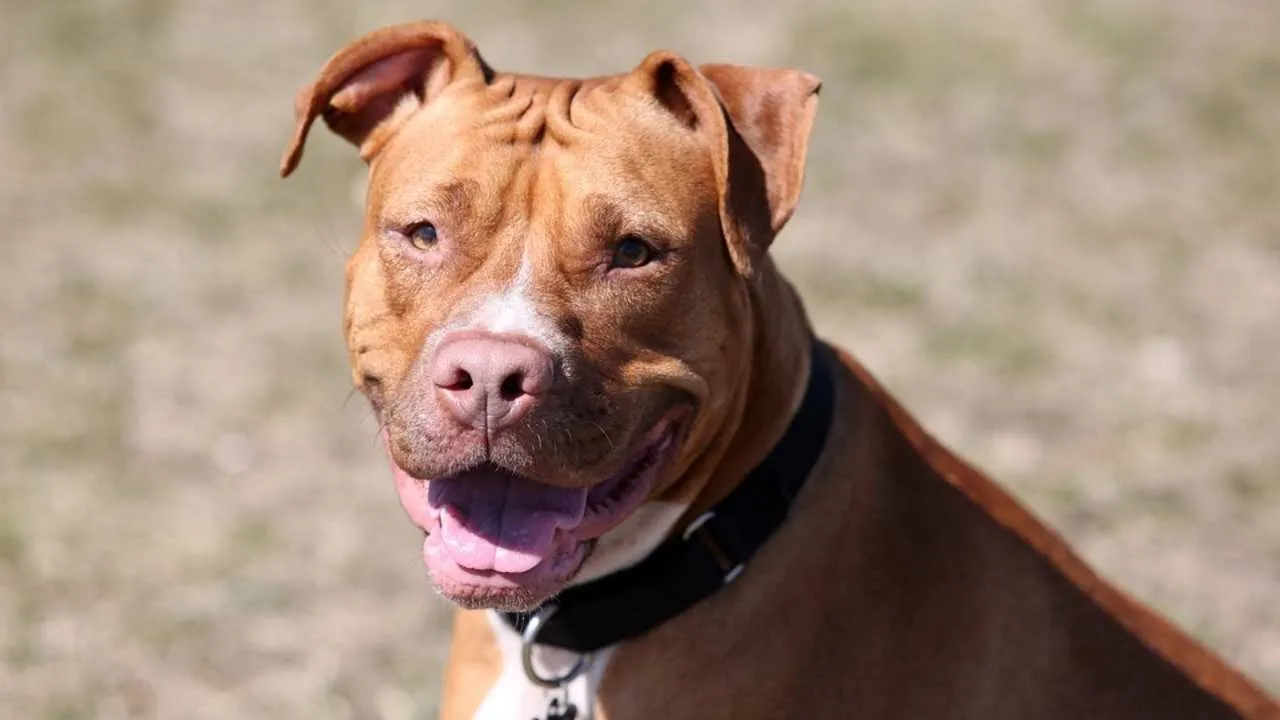
Let’s talk about a pup that’s built like a bodybuilder but has the heart of a teddy bear—the American Pit Bull Terrier! These sturdy sweethearts have a long and colorful history, starting out in England where they were bred for bull-baiting (yep, it was a thing).
Thankfully, they left those rough beginnings behind and became beloved farm dogs—and eventually, famously gentle “nanny dogs” for kids. Just don’t let the muscles fool you; these dogs are big softies at heart.
Now, before we go further, “Pit Bull” isn’t actually a breed. It’s more like a nickname for a group of brawny pups that share a similar look. The American Pit Bull Terrier is just one member of this squad, alongside cousins like the American Staffordshire Terrier, Bull Terrier, Staffordshire Bull Terrier, and the American Bully. They’re the kind of crew you’d want backing you up at the dog park… or at least in a game of tug-of-war.
Their short, sleek coats are wash-and-go easy, perfect for dog parents who don’t have time for endless brushing. They come in all kinds of stylish colors: black, white, red, brindle, you name it. A quick brush with a firm bristle and a wipe-down keeps them looking red-carpet-ready (or at least backyard-barbecue presentable).
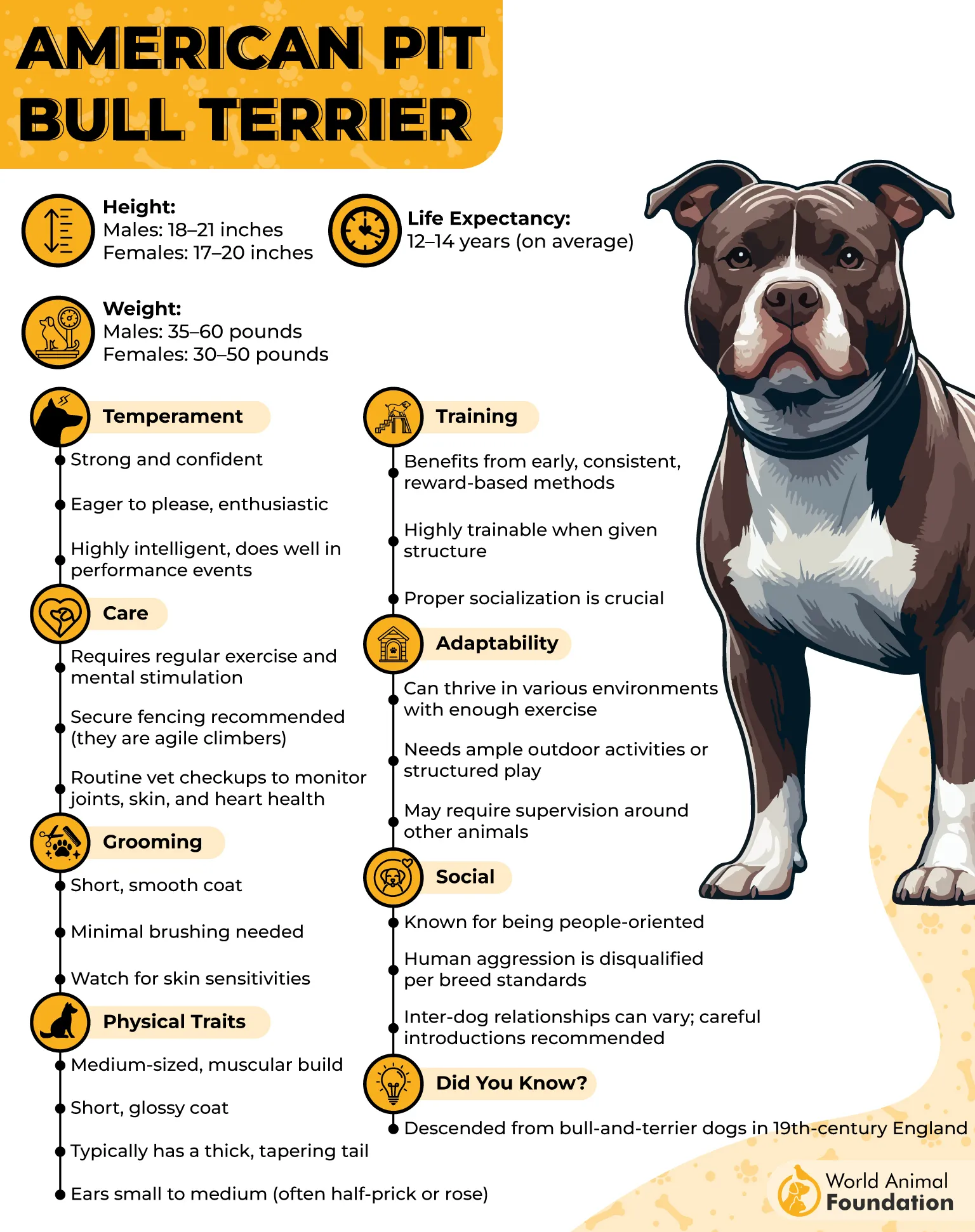
Pit Bulls adore their humans, especially the little ones. They’re famously sturdy and full of energy, making them great play buddies. Of course, like with any dog, supervision is a must during playtime. Teach kids to treat them kindly (no ear-pulling or sneaking up at dinnertime), and you’ll have a loyal, tail-wagging companion who loves family life.
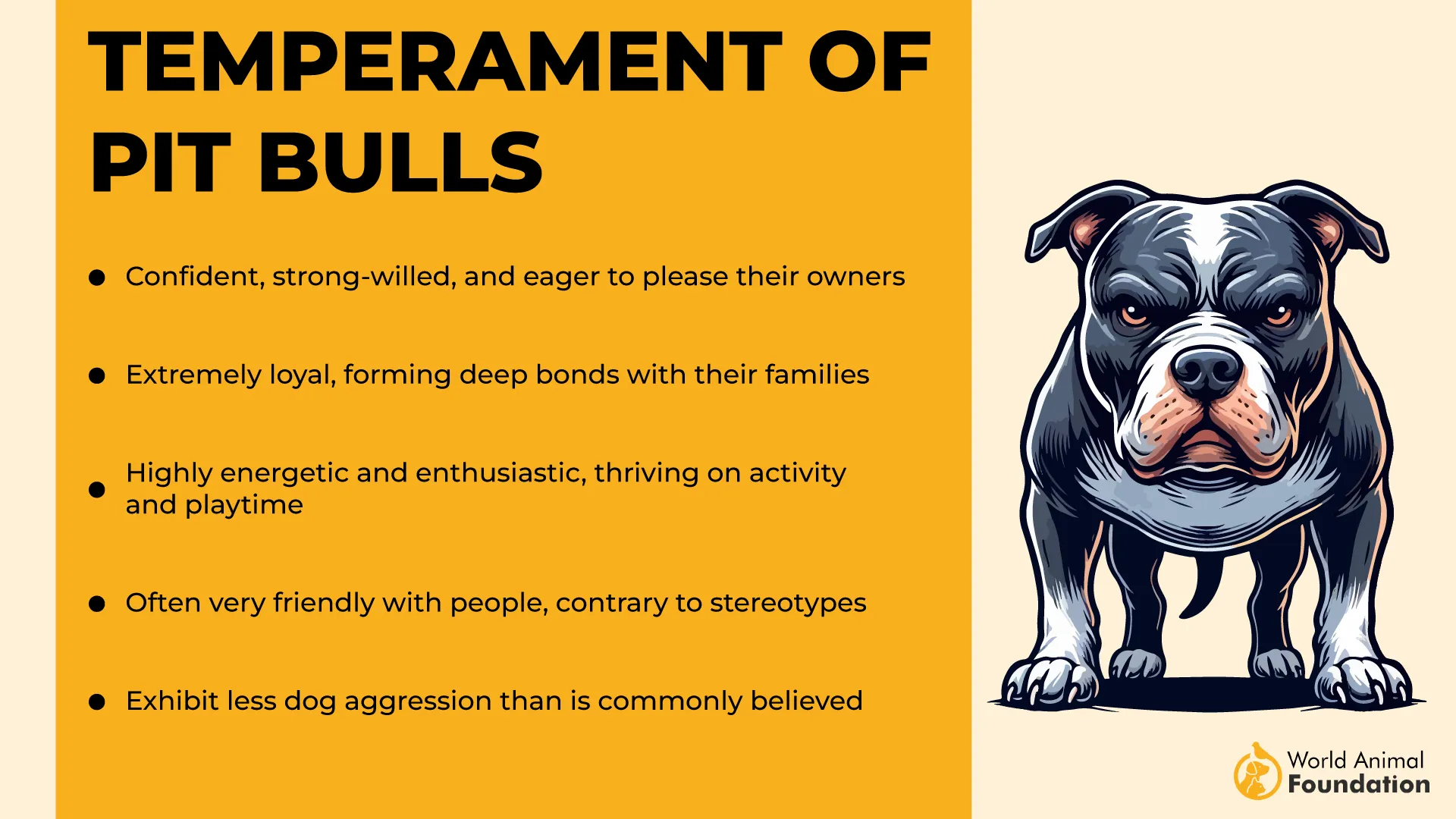
That said, not every Pit Bull is automatically a social butterfly with other pets. Thanks to a history of being bred for dog-to-dog combat, some may show a bit of attitude toward their fellow canines. But with early socialization, clear training, and some positive reinforcement, many do just fine with furry housemates. It’s all about setting them up for success—and keeping an eye out when new pet friends are involved.
Here’s the serious bit:
While these dogs were never meant to be aggressive toward humans, shady breeders and illegal dogfighting rings have hurt their reputations. Poor training and mistreatment have sadly led to incidents and strict laws in some places.
But remember: aggression is not a breed trait—it’s a learned behavior. When properly socialized and trained, these dogs are just as lovable and safe as any other.
5. Old English Sheepdog
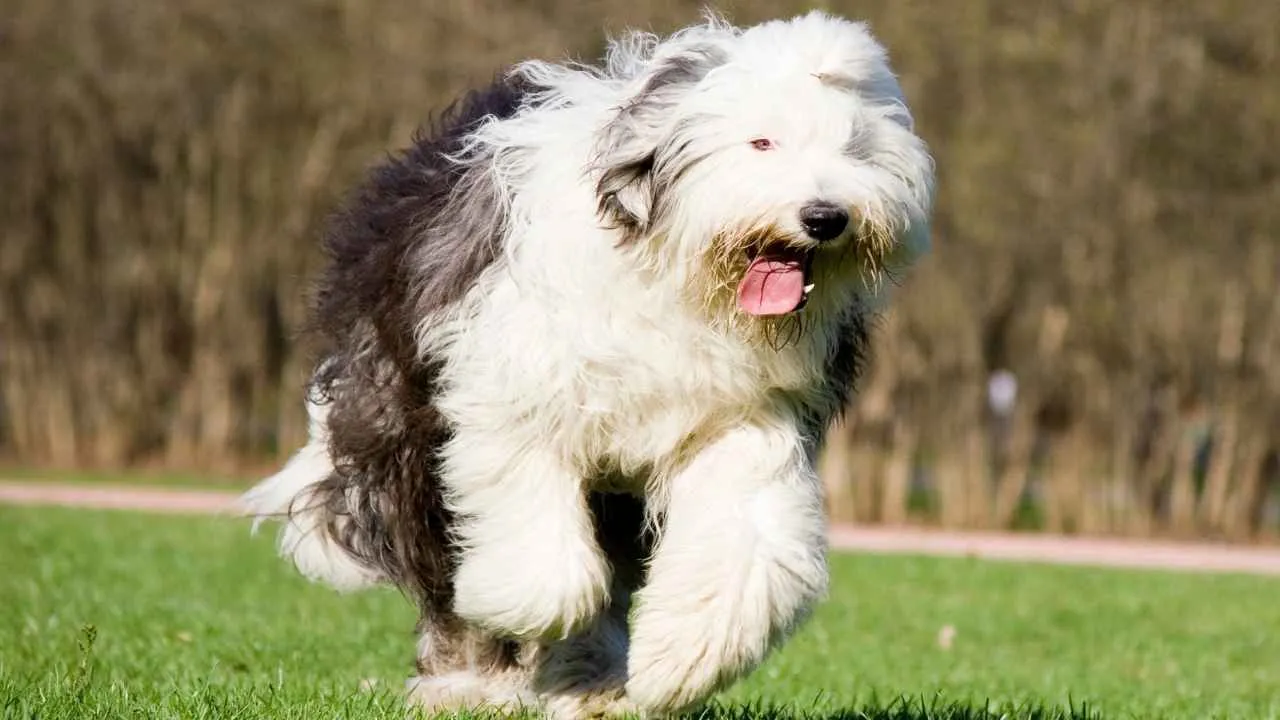
Ever seen a giant puffball on legs, shuffling across your living room like a fuzzy bear on a mission? Congratulations—you’ve just spotted an Old English Sheepdog! With their signature shaggy coats and charming “peek-a-boo” hairdo, these dogs are as delightful to watch as they are to live with. They’re big, lovable companions with hearts as fluffy as their fur.
Now let’s talk about that famous coat—the real showstopper. Old English Sheepdogs are covered in a glorious double coat of white and shades like blue, gray, or merle. But all that beauty comes with a bit of a time commitment. Weekly brushing (yes, down to the skin!) is a must unless you want your majestic fluffball turning into a tangle monster. Many pet parents opt for the adorable “puppy trim” to keep things manageable and their furniture less furry.
Grooming aside, these gentle giants are famously kind, clever, and incredibly loyal. They’re the kind of dog that’ll follow your kids around like a bodyguard with a bark, making them stellar family companions. They’re also sensible watchdogs—not aggressive, but their booming bark could definitely scare off the neighborhood raccoons (or the mailman, oops).
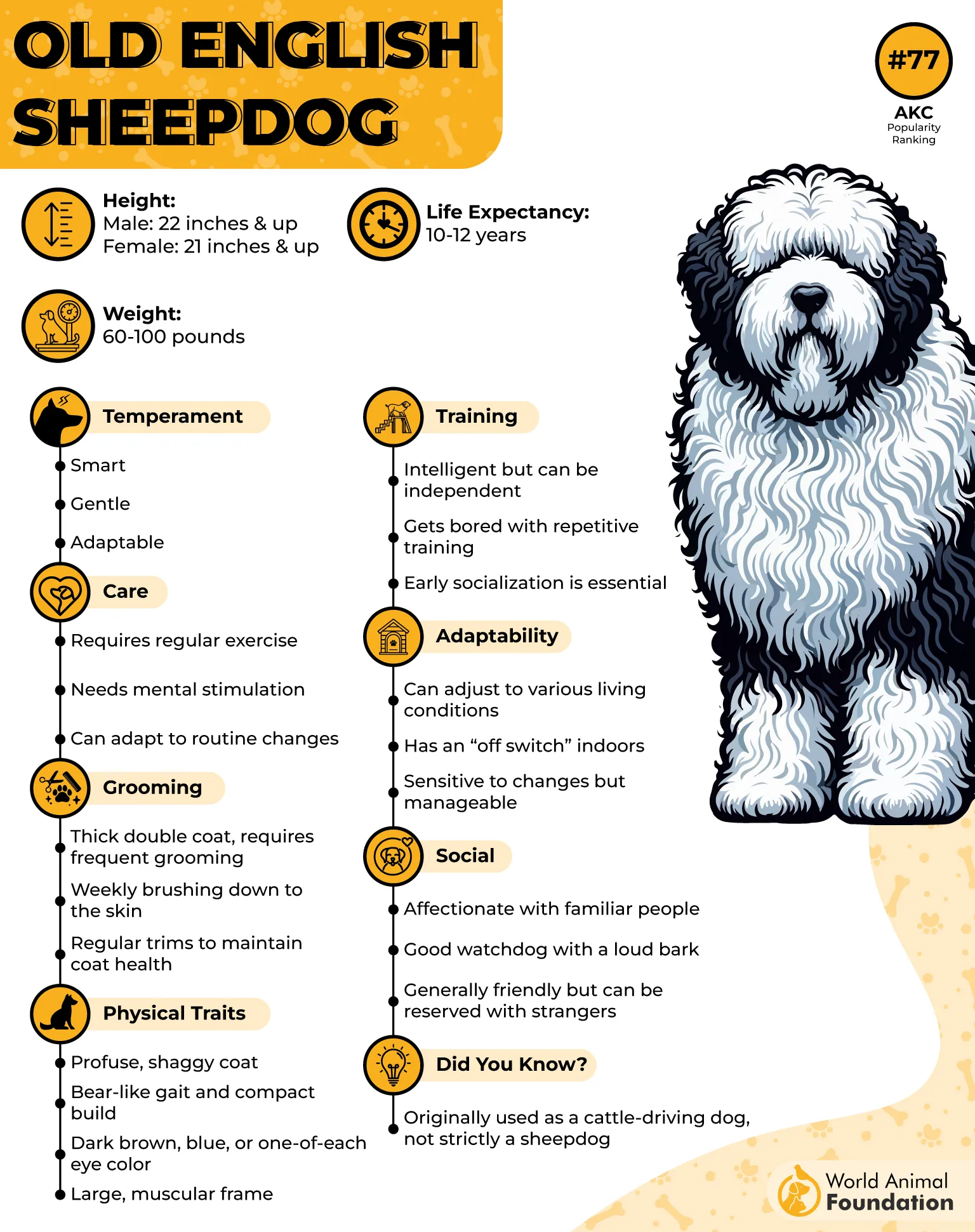
Don’t be fooled by the cozy teddy bear look—underneath all that fluffy coat is a strong, athletic pup built for work and adventure. With a burly build and a backside that’s all bounce, these dogs are surprisingly agile. Their distinctive gait might remind you of a bear doing a happy dance, but they’re quick on their feet and love a good romp outdoors. Just don’t expect them to be couch potatoes all day—they need their daily dose of fun!
Training an Old English Sheepdog is more “let’s make it a game” and less “drill sergeant mode.” These dogs are smart cookies, but they can get bored with the same ol’ routine. Keep training sessions fun and fresh, and you’ll have a willing partner who remembers everything you’ve taught—possibly even what you said three weeks ago.
Fact Check:
They may look like movie stars (because, hey, they are—just ask Disney!), but behind that Hollywood hair is a down-to-earth dog who loves belly rubs, muddy adventures, and a comfy spot to nap after playtime. Just remember, that adorable fluffball puppy will grow into a large, shaggy sofa-hogger… possibly wet and muddy. Plan accordingly.
6. Miniature Schnauzer
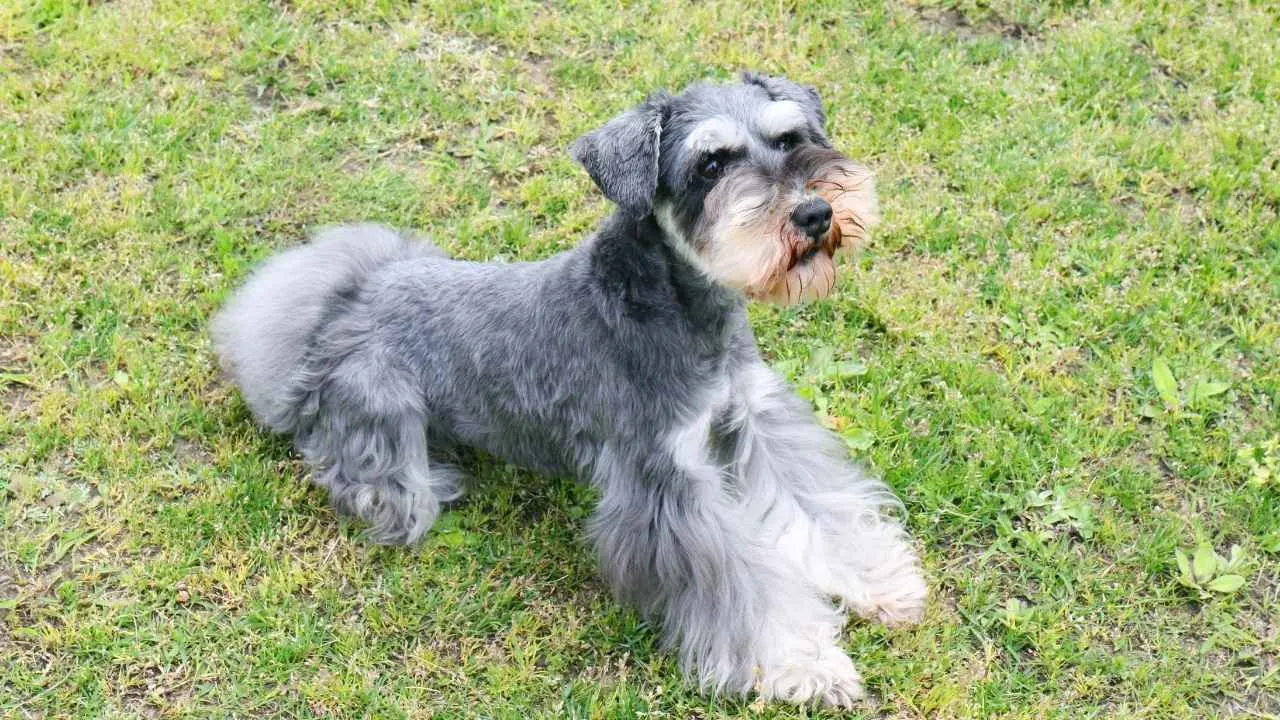
If you’re looking for a dignified yet spirited companion, the Miniature Schnauzer fits the bill. With their signature beards and alert expressions, these compact, muscular dogs bring both charm and high energy.
Originally bred in Germany, they’re one of the most versatile companion animals among many dog breeds—equally at ease in an apartment or roaming a backyard. Though small, they’re full of determination and always ready to engage in a brisk walk or brain-teasing game.
Mini Schnauzers sport a wiry, low-shedding coat that’s easy to manage with regular grooming. Recognized color variations include Salt & Pepper, Black & Silver, and Solid Black. The Salt & Pepper variety often displays gorgeous gray coats, adding to their elegant appearance. Though white Schnauzers exist, they remain unrecognized by some breed clubs due to genetic rarity.
Not all white Schnauzers are created equal, either. There are different shades—from “true white” with black noses and paw pads, to “false white,” where a pale tan coat fades to white over time. You might also see variations like “white chocolate” (think brown noses) or pups born with pink features that darken with age. It’s a colorful world, even in white!
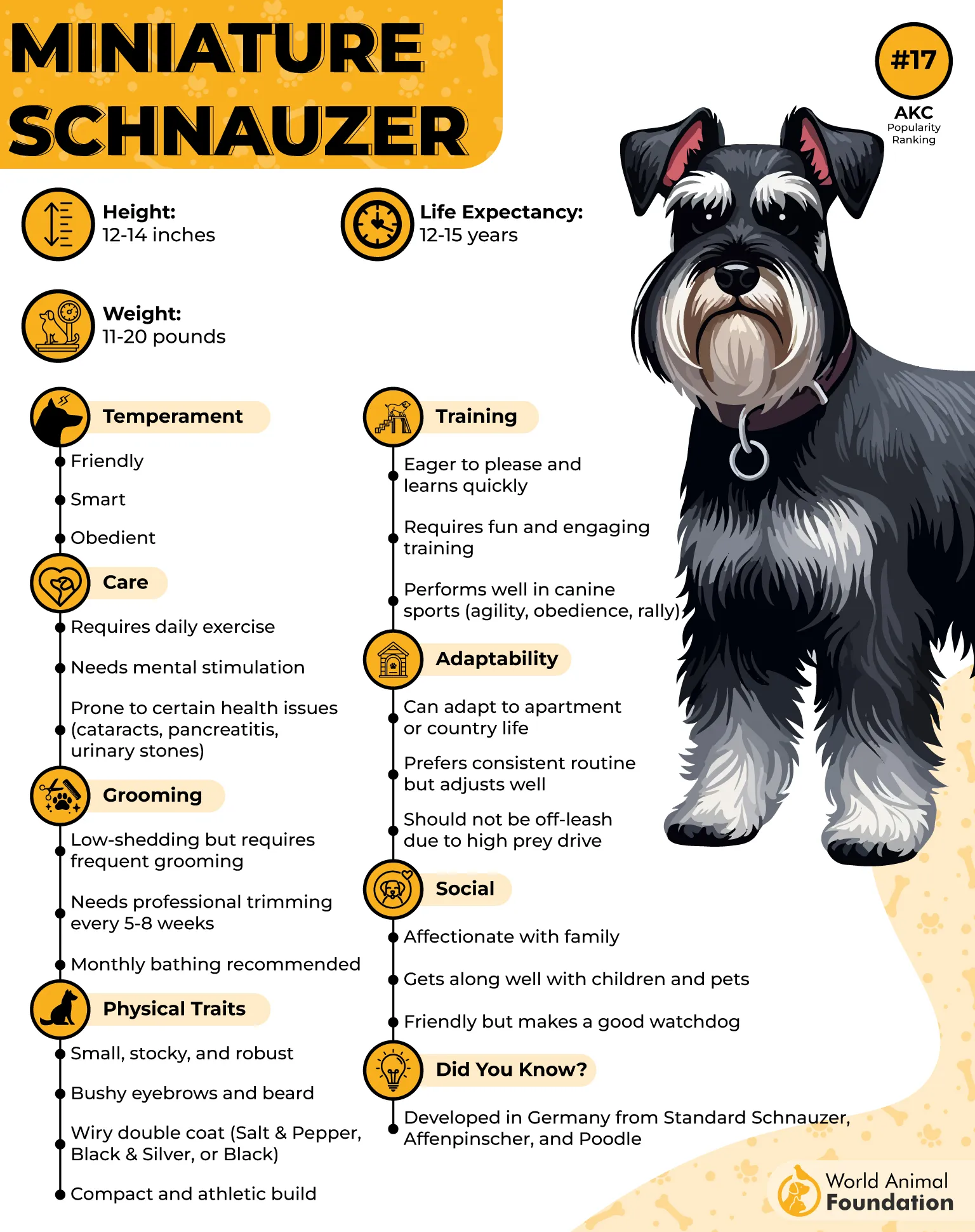
Known for being alert, loyal, and playful, Miniature Schnauzers are excellent furry friends for families and singles alike. Their compact frame hides the heart of a watchdog and the curiosity of a puzzle-solver. These high-energy dogs thrive on both physical and mental stimulation.
With a manageable coat length and a temperament suited to active homes, the Miniature Schnauzer is a clever and lovable standout among companion animals.
Did You Know?
Only Miniature Schnauzers can come in white. The Standard and Giant versions? Nope. They’re strictly team Salt & Pepper, Black & Silver, or Solid Black. So if you’re dreaming of a little white beardie bouncing around your home, you’ll want to stick with the mini version—and be ready to fall in love with a seriously sassy sidekick.
7. Morkie
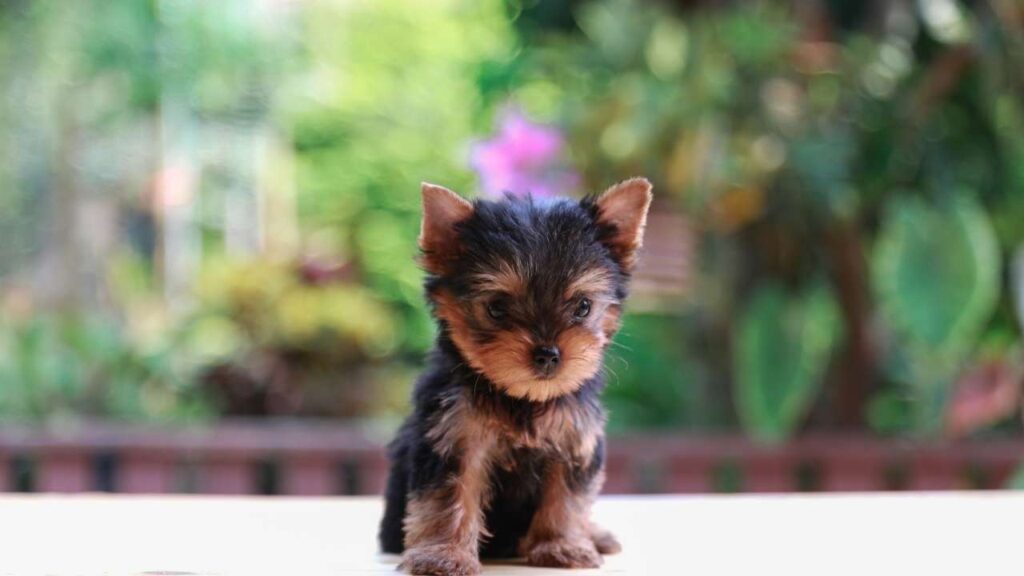
Say hello to the Morkie—equal parts fluffball, firecracker, and forever friend. A cross between a Maltese and a Yorkshire Terrier, this petite companion brings a silky coat, a bold attitude, and a heart full of loyalty. Though tiny in size, Morkies overflow with charm and confidence, making them one of the most popular dog breeds for apartment dwellers and active pet parents alike.
This little dynamo is happiest by your side—whether you’re curled up on the couch or heading out for a short stroll. They don’t need intense workouts, but their sharp, Yorkie-influenced mind craves engagement.
Mental stimulation is a must, or they’ll create their own adventures (usually involving shoes). Morkies may sport a variety of coat shades—including hints of a silver-gray or blue-gray coat—but all share the same need for daily brushing. Their silky coat can’t tangle easily, and regular grooming helps maintain the breed’s coat to match its designer-dog appeal.
Weighing up to just 7 pounds, the Morkie looks like a plush toy come to life, with button eyes full of mischief and ears that perk at every sound. While they might appear dainty, they’ve got a bark that rivals bigger breeds.
PetMD states they’re protective, vocal, and surprisingly alert—traits that make them effective little watchdogs. Best suited for adults or families with older kids, this royal dog thrives on attention and can get anxious if left alone for too long. For those seeking a loyal shadow with a big personality and a stunning, silky coat, the Morkie might be your perfect match.
Fact Check:
Sometimes called the Morkshire Terrier, the Morkie is a relatively new mix and is not yet recognized as an official breed by the American Kennel Club (AKC).
Conclusion
Gray and white-coated dog breeds come in all shapes, sizes, and coat types—from the sleek, short coat of the Italian Greyhound to the shaggy outer coat of the Bearded Collie. Whether you’re drawn to the thick ruff of the Alaskan Malamute, the elegant long coat of a Toy or Miniature Poodle, or the striking grayish blue hue of a Kerry Blue Terrier, there’s a breed to match every lifestyle.
Some, like the ancient breeds from the Middle East, carry history in their genes, while others, like the energetic Blue Lacy or watchful German Shepherd, bring loyalty and drive to modern homes. From fluffy, long-haired breeds to the smooth silver-gray coat of the Thai Ridgeback, these dogs don’t just bring beauty—they bring personality in every shade of gray.


